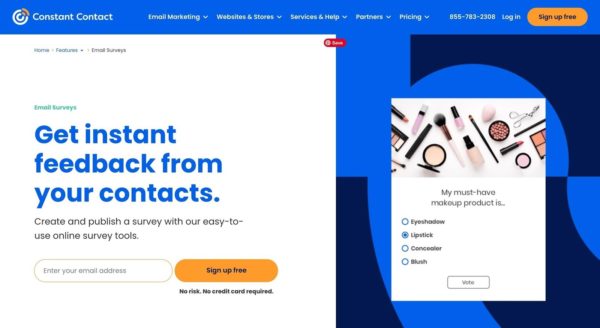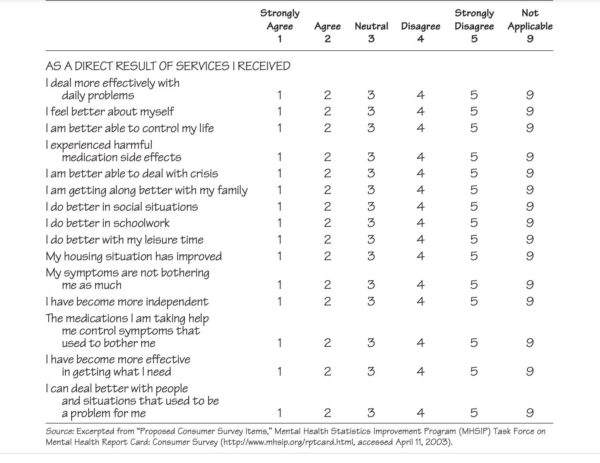
Sometimes all you need to do is ask. Surveys provide nonprofits with important information about past performance and help them shape their agenda for the future. They can put organizations in touch with the people they serve.
Your community members need to be and feel heard, and surveys facilitate that. These nonprofit survey examples will help you communicate with donors and staff, focusing your fundraising efforts and getting the best from your volunteers.
This introduction to nonprofit surveys will cover:
- Why you should distribute them
- How you should distribute them
- Best survey practices
- Nonprofit survey examples
So read on, and craft surveys that will help you meet your nonprofit’s goals.
Why should you distribute nonprofit surveys?
There are three main reasons you should use surveys:
- They improve communication between you and all the members of your community.
- They provide valuable information about your donors, clients, and volunteers.
- They can help you segment your email lists.
The first two benefits are largely intuitive, but surveys can also help you maximize your email marketing efforts. List segmentation separates your population into discrete audiences so that you can better personalize your messages to target different groups.
You can use surveys to discover demographics and interests. Ask them which programs they’d like to follow and how often they’d like you to communicate. People are much more receptive to information they’ve requested.
How should you distribute nonprofit surveys?
Sometimes it makes sense to use paper surveys and distribute them personally. For example, your surveyees may have limited access to the internet or be less comfortable with computers.
However, the convenience of email often promotes their best interests as well as yours. Most people check their email frequently and can run through a brief set of questions with ease. On your end, an emailed survey means that no one has to manually enter feedback or calculate averages.
You no longer need to code your own program or master Excel in order to send out a survey. Adapt ready-made templates and use Constant Contact’s survey tools to distribute your questionnaire.

The best survey practices
While you’ll need to tailor your surveys to your mission and audience, there are a few golden rules.
Keep questions focused
Don’t combine questions. The requested information should be clear and distinct from other questions.
Use scales and multiple choice
Ask people to rate something on a scale from one to five, or give them a limited number of options from which they can select. Your surveys will be easier both to answer and to aggregate.
Limit your questions
Decide what is most important and focus your surveys accordingly. If a survey is too long, many will simply drop out midway.
Include space for additional observations.
Sometimes you don’t know what you need to know, and a few questions can only account for so many opinions. Include one or two more open-ended questions for people to answer as they will. You may find valuable information in these new perspectives.
Nonprofit survey templates
The following sections offer suggestions for different possible surveys. The survey sets are each tailored to the surveyees, but there’s at least one question that should appear on all of the lists:
- How likely are you to recommend this organization to a friend or colleague?
Whether you’re speaking to someone in the community you aim to help or in the community you aim to recruit, their endorsement is your best measure of success.
Nonprofit client satisfaction survey
Customer feedback is a crucial part of a for-profit strategy, but it’s just as valuable in the nonprofit sector. First of all, their input will help you to refine your programs to better meet their needs. Giving them a part in the decision-making process allows your beneficiaries to practice self-advocacy, a necessary skill.
Sample questions:
- How satisfied are you with the overall service provided by this organization?
- How easy is it to access the services we provide?
- Do you feel that the staff treats you with dignity and respect?
- How well do our staff members perform their designated functions?
It’s also a good idea to write out the aims of your organization as a series of “I” statements. For example, a nonprofit that provides mental health services might say something like “I feel better able to control my life.” Ask how strongly the survey-taker agrees with each of the statements on a scale from one to five.

Volunteer survey
Make sure that your volunteers feel valued. Their time often means the difference between failure and success, and you want to ensure that they keep coming back.
As is true for all of these survey sets, you don’t have to start from scratch. You can use a template, such as the one from Survey Monkey from which many of the following questions were taken.
Sample questions:
- How convenient were our training sessions for you to attend?
- How useful was the volunteer training you received?
- How much of an impact do you feel was caused by your volunteer work?
- How appreciated did you feel as a volunteer within our organization?
- How satisfied were you with your volunteer experience?
- How likely are you to continue to volunteer at our organization?
- In a typical month, about how many hours do you have to volunteer?
- Do you have any suggestions for how we might improve our volunteering experience?
Donor survey
Even after you’ve found your donors and delivered a successful ask, you can’t sit back and relax. Nonprofits constantly struggle to keep donors donating. In 2020, donor retention rates were 61% for returning donors and an abysmal 20% for new donors.
Donor surveys can help you refine your outreach strategy and develop long-lasting, profitable relationships. Ask for feedback from both new donors and returning ones.
Sample questions:
- How did you learn about our organization?
- Why did you become involved with our organization?
- How familiar are you with our organization’s mission?
- Which platform did you use to donate to our organization?
- How easy was it to donate to our organization?
- How confident are you that your donations are used effectively?
- How likely are you to donate to our organization again?
- How would you like to be informed about our fundraising efforts? Check all that apply. (List your channels of communication.)
- How often would you like to hear from our organization?
- How valued do you feel as a donor?
You should also distribute surveys after fundraising events in order to judge their effectiveness. Read Constant Contact’s article on post-event surveys for more ideas.
Lapsed donor survey
Another good time to survey donors is when they’ve stopped giving. Along with an update and emotional appeal, ask them a couple of questions about their potential for future involvement:
- I will renew my support if/when….
- What matters to you most when it comes to the aims of our organization?
This solicitation has multiple positive, potential outcomes:
- The former donors are reminded of the organization, persuaded by the appeal, and convinced to donate.
- They don’t donate but do complete the survey, which gives you valuable information that you can use to tailor your approach.
- They provide both funds and answers, giving you the best of all the possible outcomes.
Give yourself multiple ways to win — it will vastly increase your odds of success.
Board engagement survey
An engaged board is vital to your nonprofit. When they feel fully invested in your organization’s mission, board members give more of their time and energy to strategy and outreach. Regular assessment can prevent board member neglect and apathy before those problems occur. While director and peer assessments have their place, some of the best critiques members receive are self-directed. Sample questions:
- How well do you understand our organization’s driving purpose?
- How well do you understand your role as a board member?
- What percentage of meetings did you attend over the last three months?
- How active are you in your participation during board meetings?
- How much of a role do you feel that you play in shaping organizational objectives and perspectives?
- How could our board meetings run more smoothly?
- What should our organization do more of?
Follow up and follow through.
In some ways, you’re just getting started once the survey is completed. Then, it’s time to put all that feedback to good use. People feel appreciated when they see the results of their input and can grow frustrated when they feel they haven’t been heard.
Listen to the members of your community. They’ll tell you what they need from you.
And Constant Contact will tell you how to find and reach them. Read The Download: Making Sense of Online Marketing for Community Services and check back regularly for new tips and ideas in the blog section devoted to nonprofit organizations.




